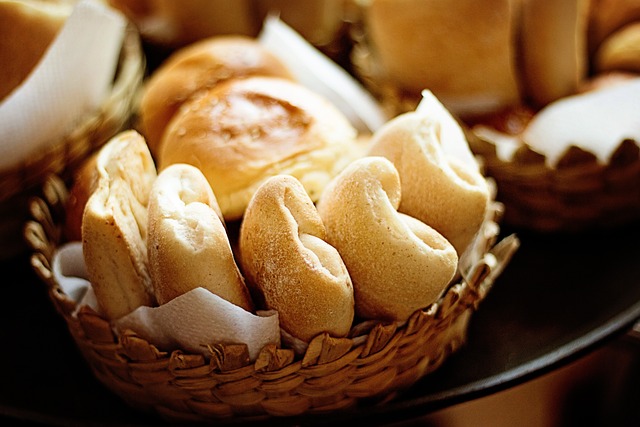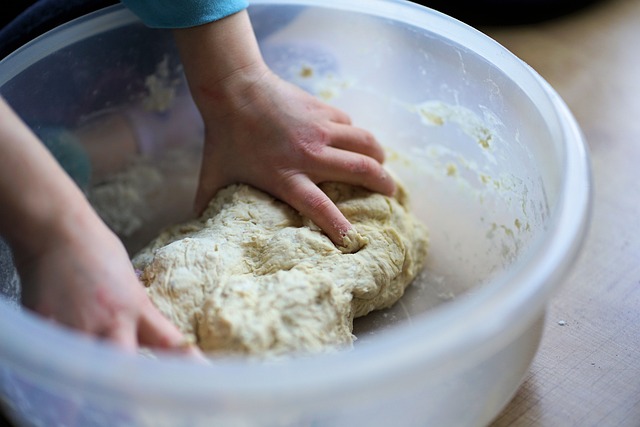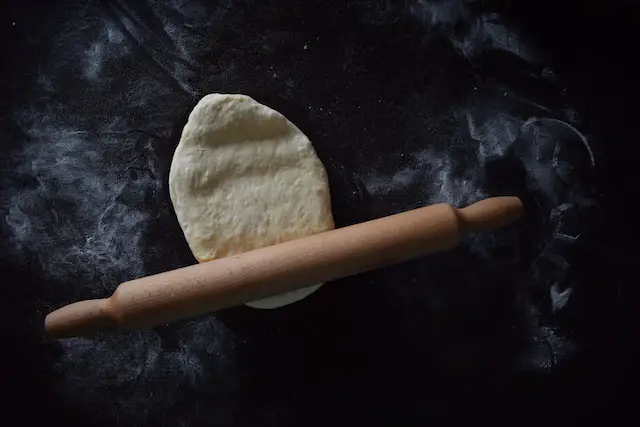Both instant yeast and active dry yeast have their strengths and weaknesses. Instant yeast is faster-acting, requires no rehydration, and can be added directly to the dough mixture. Active dry yeast, on the other hand, has a longer shelf life and can be stored without refrigeration.
What is yeast?
(Image by Dominic Alberts from Pixabay )

Yeast is a type of single-celled fungus that plays a crucial role in the world of baking and fermentation. It’s responsible for making bread rise, turning grape juice into wine, and even creating beer! Yeast feeds on sugar, breaking it down into carbon dioxide gas and alcohol through a process called fermentation.
There are several different types of yeast used in baking and brewing today. The most common ones include instant yeast, active dry yeast, sourdough starter culture, cake yeast or fresh yeast.
When it comes to baking bread specifically, yeast works by consuming the sugars found in flour doughs. As the yeasts consume those sugars during fermentation they produce CO2 which creates bubbles within the dough – causing it to rise rapidly.
Different types of yeasts will behave differently depending on their strain characteristics as well as environmental factors such as temperature and humidity levels during proofing periods. Properly understanding your choice of yeast can make all the difference between having perfect airy bread or dense bricks.
Instant yeast Vs. Active dry yeast – Key differences
When it comes to baking bread, yeast is an essential ingredient that makes the dough rise and gives the final product its characteristic texture and flavor. However, not all yeast is created equal, and there are two main types that you’re likely to encounter at the store: instant yeast and active dry yeast.
The key difference between these two types of yeast lies in their moisture content. Instant yeast has a higher water content than active dry yeast, which means that it dissolves faster and can be added directly to the dough without being activated first.
On the other hand, active dry yeast needs to be rehydrated in warm water before use to activate its fermentation properties. This extra step can add some time to your baking process but allows for more control over how much yeast you use in your recipe.
While both types of yeasts can achieve similar results when used properly, instant yeast tends to produce a slightly lighter and airier crumb than active dry yeast. Additionally, because it doesn’t need activation time or proofing before use, instant yeast can help speed up your baking process by cutting down on rising times.
Ultimately, deciding whether to use instant or active dry yeast will depend on your personal preferences as well as the specific recipe you’re using. Experiment with both types of yeasts in different recipes until you find what works best for you!
The pros and cons of Instant Yeast
Instant yeast, also known as fast-rising or bread machine yeast, is a type of dry yeast that is designed to speed up the bread-making process. Here are some pros and cons of using instant yeast:
Pros:
One of the biggest advantages of using instant yeast is that it works quickly – hence its name! Unlike active dry yeast, which requires proofing in warm water before use, this type can be added directly to your recipe. This makes it ideal for busy bakers who want to save time.
Another benefit of instant yeast is that it produces consistent results with minimal effort. Since you don’t have to worry about proofing or activating the yeast beforehand, there’s less room for error. Plus, many brands offer pre-measured packets that make baking even easier.
Cons:
While there are certainly benefits to using instant yeast, there are also some drawbacks. For one thing, this type tends to be more expensive than active dry yeast. Additionally, because it works so quickly and efficiently, recipes may require less rising time overall – which can impact the flavor and texture of your final product.
It’s worth noting that not all recipes are compatible with instant yeast either; some may specifically call for active dry or fresh cake yeasts instead. While convenient for quick loaves like sandwich breads and dinner rolls – if you’re looking for a more complex flavour profile then you might find Instant Yeast falls short compared with Active Dry Yeast over long-fermentations such as sourdough making
The pros and cons of Active dry yeast
Active dry yeast, as the name implies, is a type of yeast that is dried and becomes dormant. It needs to be reactivated by being mixed with warm water before use in baking. Here are some pros and cons of using active dry yeast.
Pros:
One of the main advantages of active dry yeast is its long shelf life. It can be stored at room temperature for up to two years without losing potency. This makes it an ideal choice for occasional bakers who don’t need to use yeast on a regular basis.
Another advantage is that active dry yeast doesn’t require any special equipment or techniques. It can be used in most recipes without any modifications. Additionally, because it’s less processed than instant yeast, many people believe it has a more complex flavor.
Cons:
The biggest drawback of active dry yeast compared to instant yeast is its longer activation time. Because it needs to be dissolved in warm water before use, this adds extra time to the preparation process.
Additionally, because active dry yeast contains around 8-10% moisture content compared to instant yeasts’ 3%, it tends not rise as quickly or predictably when activated leading sometimes needing additional rising times which could result in over-proofing if left too long.
Deciding whether to use active dry or instant depends largely on personal preference and recipe requirements but both have their own unique functions making each better suited for different types of breads/baked goods
How to use instant yeast and active dry yeast?
Using instant yeast and active dry yeast is easy. The primary difference lies in their activation process before use. Instant yeast does not require activation, while active dry yeast needs to be activated in warm water or milk with sugar.
For recipes that call for instant yeast, simply add the required amount of instant yeast directly into the flour mixture along with other ingredients and knead. However, when using active dry yeast, it’s crucial to activate it first by dissolving it into a small portion of the recipe’s liquid component.
It’s vital to ensure that the temperature of your liquid when activating the active dry yeast isn’t too hot; otherwise, it could kill off some of its effectiveness due to heat sensitivity.
After about five minutes of activation time, you should notice foam forming on top of your mixture as an indication that your dough will rise correctly once mixed thoroughly with all other necessary ingredients. Once activated properly and added to the rest of the recipe components like flour and sugar mixtures or doughs, they should work similarly well.
Whether you are using instant or active dry yeasts in bread-making recipes such as pizza crusts or cinnamon rolls, always follow instructions carefully for best results.
Recipes using instant yeast and active dry yeast
(Image by Andreas Lischka from Pixabay )

When it comes to recipes using yeast, both instant and active dry yeast can be used interchangeably in most cases. However, there are some differences in how they are used that can affect the final product.
For recipes using instant yeast, such as pizza dough or quick breads, the process is much quicker than with active dry yeast. Instant yeast doesn’t need to be proofed before use and can be added directly to the flour mixture. This means less wait time for rising and a faster overall preparation time.
On the other hand, active dry yeast requires proofing in warm water before use. This step activates the live cultures within the yeast and ensures proper fermentation during baking. Recipes using active dry yeast may take longer to prepare due to this extra step but can result in a more flavorful finished product.
Recipes that call for one type of yeast over another will usually specify which type to use. If a recipe calls for one packet of active dry yeast, you cannot simply substitute it with one packet of instant yeasts without adjusting other ingredients or steps accordingly.
In general, knowing how each type of yeasts works allows bakers and cooks alike to feel confident when making their favorite baked goods at home!
Featured Image By – Tamara Gak on Unsplash








